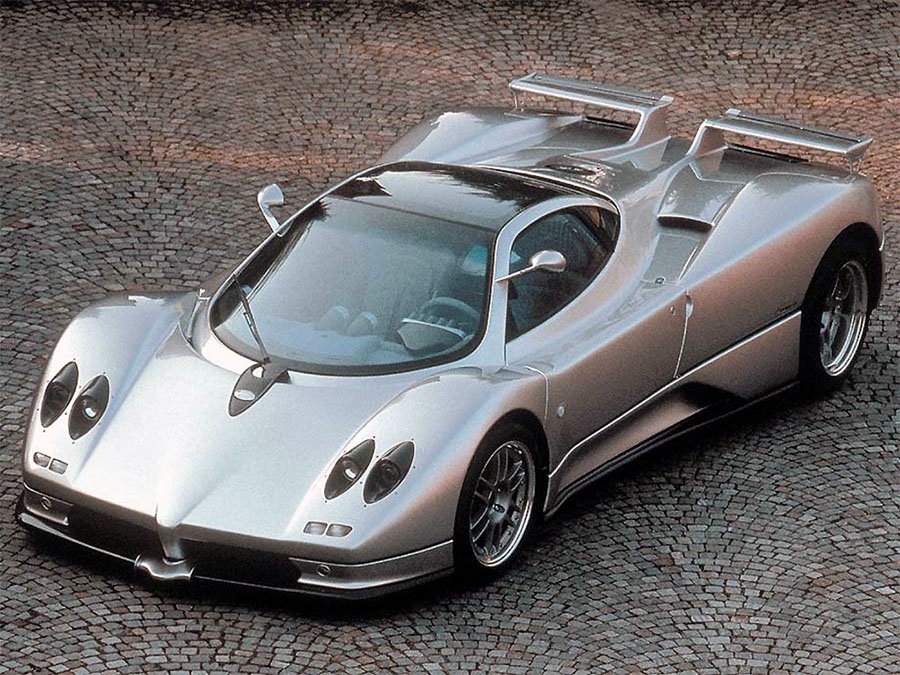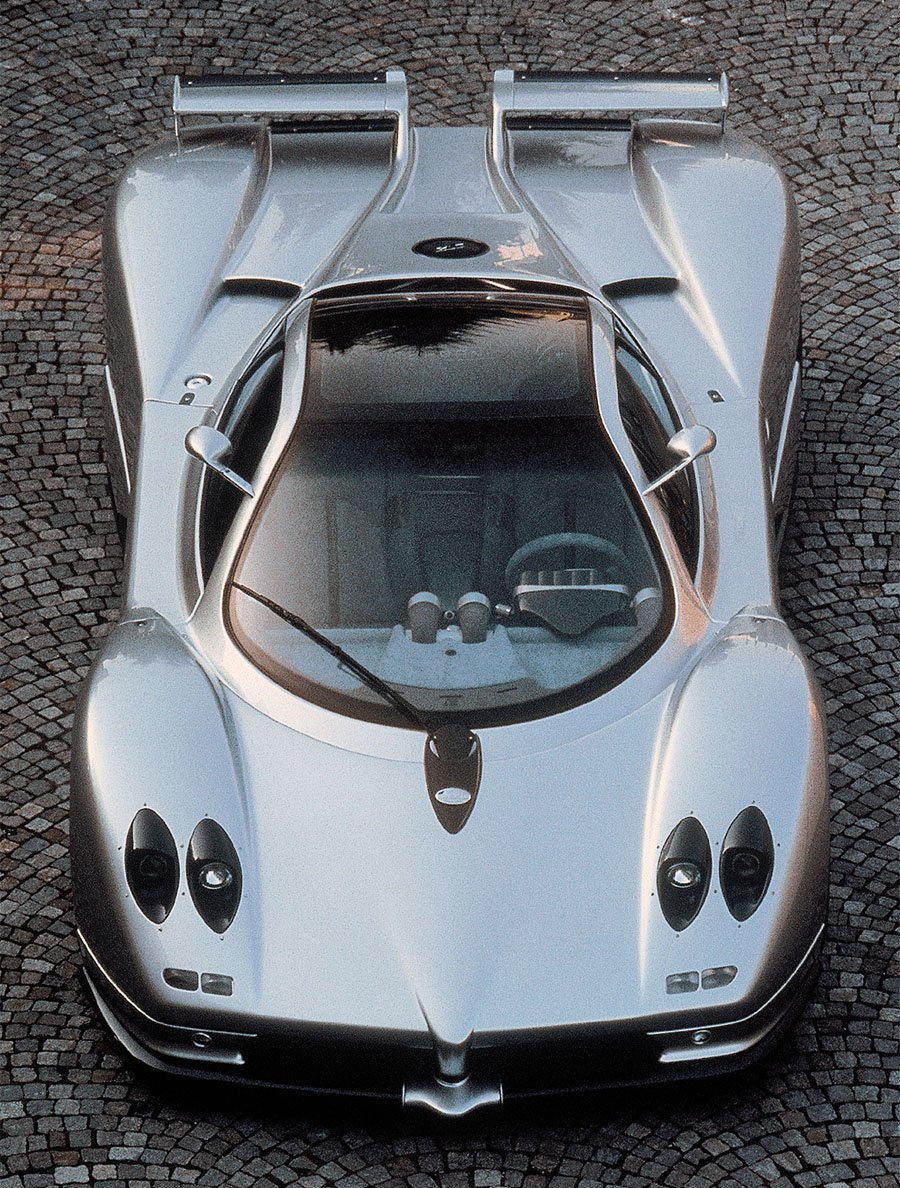Guide: Pagani Zonda C12 S 7.0 - a Historical & Technical Appraisal
/BACKGROUND
Launched at the Geneva Motor Show in March 1999, the Zonda C12 proved to be the most accomplished high performance motor car released by a new manufacturer in decades.
The Zonda was beautifully resolved, exquisitely engineered and riddled with state-of-the-art components. Just as importantly, it went as well as it looked; handling dynamics were universally praised and performance figures were astounding. Build quality was second-to-none.
At the head of the firm was Italian-domiciled Argentine, Horacio Pagani, who, having built his own Formula 3 car at the age of 20, departed South America for Europe. After a brief spell working in Renault’s racing department, Pagani joined Lamborghini where, over a ten-year stint between 1982 and 1992, he carved out a reputation as a renowned engineer, composites expert and aerodynamicist.
Like the heads of all the most successful auto builders, Horacio Pagani had no interest in resting on his laurels; twelve months after the first C12 prototype took its bow, an even faster iteration was presented.
The uprated Zonda S was most notably powered by a new seven-litre engine instead of the original six-litre unit. It also ushered in a variety of aerodynamic enhancements.
ENGINE / TRANSMISSION
The seven-litre AMG-tuned Mercedes-Benz V12 at the heart of the Zonda S was among the largest and most powerful European engines in production. However, it was still highly tractable at any speed.
Designated Type M170 E 72, compared to the original six-litre unit it was bored by 0.7mm (to 89.7mm) and stroked by a massive 12.2mm (to 92.4mm). The result was an extraordinary 1023cc gain that took displacement to 7010cc.
Otherwise, the specification of these normally aspirated, longitudinally-mounted engines remained much as before.
They employed wet-sump lubrication, an aluminium alloy block and heads, dual overhead camshafts and four valves per cylinder.
The engines arrived from AMG in Germany and were installed without any further modification. As before, the compression ratio was 10.0:1. Bosch HFM engine management was a Motronic-type system that controlled fuel-injection and ignition.
As a result of the major capacity enlargement, output figures increased by a considerable margin.
The power output went from 394bhp at 5200rpm to 550bhp at 5500rpm.
The torque rating soared to 553lb-ft at 4100rpm compared to 420lb-ft at 3800rpm for the six-litre engine.
Unlike some of the original Zondas, every Zonda S was originally fitted with Pagani’s own six-speed manual gearbox. New ratios were installed to reflect the latest engine’s characteristics. Transmission was through a twin-plate AP clutch and self-locking differential.
BODYWORK
To add a little more downforce and improve airflow, the Zonda S came with an updated aero kit.
The nose featured a more pronounced central divider that was integrated with a contoured delta on the upper surface. At the base of the front apron’s central divider was an enlarged mini chin spoiler that could be configured in body colour or bare carbonfibre.
The other obvious change was at the back of the car. Instead of the original full-width spoiler mounted on two central pylons, Pagani installed a pair of distinctive winglets either side of the central tunnel.
As before, bodywork was fabricated entirely from carbonfibre and in as few sections as possible. The single piece front and rear clam shells opened at the leading and trailing edges respectively. Both were held in place with traditional leather retaining straps.
Doors opened outwards in conventional fashion.
A two-piece glass roof and large windows flooded the cockpit with natural light.
Intake ducts and cooling louvres were littered around the bodywork; ventilation was further enhanced by the meshed tail fascia which also housed stacked light clusters and a centrally-exiting four-outlet exhaust system.
INTERIOR
Aside from a new Zonda S script located on the centre console, the interior was unchanged.
Instrumentation was confined to a simple oval binnacle with a natural aluminium finish to match the pod-style air vents and centre console fascia.
Large analogue instruments for road and engine speed were flanked to the left by a fuel gauge and to the right by a water temperature read out. Also off to the right-hand side were myriad warning lights. At the base of the instrument binnacle was a digital screen that provided the driver with all kinds of additional information.
Upholstery was a mix of carpet, leather and alcantara suede (perforated in the case of the seat centres and sides of the steering wheel).
Polished aluminium was used for certain areas to include the artistically crafted pedals.
Standard equipment included air-conditioning, electric windows, electric mirrors, a high end audio system and a pair of leather suitcases that could be stowed in exposed carbonfibre luggage bins ahead of the rear wheels.
CHASSIS
Each Zonda was based around a state-of-the-art tub manufactured from advanced composite materials. This method of construction gave the car a high level of stiffness and meant it was highly resistant to impact and fatigue. A 2730mm wheelbase ensured there was plenty of cockpit space for driver and passenger.
Attached to either end of the carbonfibre composite tub were subframes fabricated from chrome molybdenum steel. The front subframe carried the suspension, power-assisted steering box and various auxiliary systems. It was also deformable in the event of a frontal impact.
The rear subframe supported the engine, gearbox, suspension and other sundry accessories. It was designed to reduce the kind of noise and vibration that afflicted some early carbonfibre-tubbed supercars.
Suspension was via double wishbones manufactured from lightweight aluminium alloy. Helicoidal springs and hydraulic dampers were installed all round along with anti-roll bars at either end. Anti-dive and anti-squat geometry was also fitted. Ride height was electronically adjustable from within the cockpit.
The brake system was sourced from Brembo. It comprised four-piston calipers with ventilated discs of 355mm diameter up front and 335mm diameter at the rear. ABS was not fitted.
Split rim wheels were supplied by OZ Racing. They had an 18-inch diameter, were 9.5-inches wide up front, 13-inches wide at the back and originally came shod with Michelin Pilot tyres (255/40 ZR18 front and 345/35 ZR18 rear).
An 85-litre fuel tank was located in the lower section behind the cockpit.
OPTIONS
Optional extras included coloured wheel centres and bare carbonfibre bodywork.
Pagani could accommodate practically any request for paint and interior finishes.
WEIGHT / PERFORMANCE
Weight was officially unchanged from the original Zonda at 1250kg.
However, the extra 156bhp and 133lb-ft resulted in a much higher top speed and improved mid-range flexibility.
Top speed went from 185mph to 211mph.
The 0-62mph time stayed at 3.7 seconds.
PRODUCTION
Zonda S production began soon after the Geneva Motor Show in March 2000.
15 examples were built before Pagani introduced the further enhanced Zonda S 7.3 at the Geneva Motor Show in March 2002.
The Zonda S 7.3 would also mark the arrival of a Roadster body style.
Text copyright: Supercar Nostalgia
Photo copyright: Pagani - https://www.pagani.com/






















